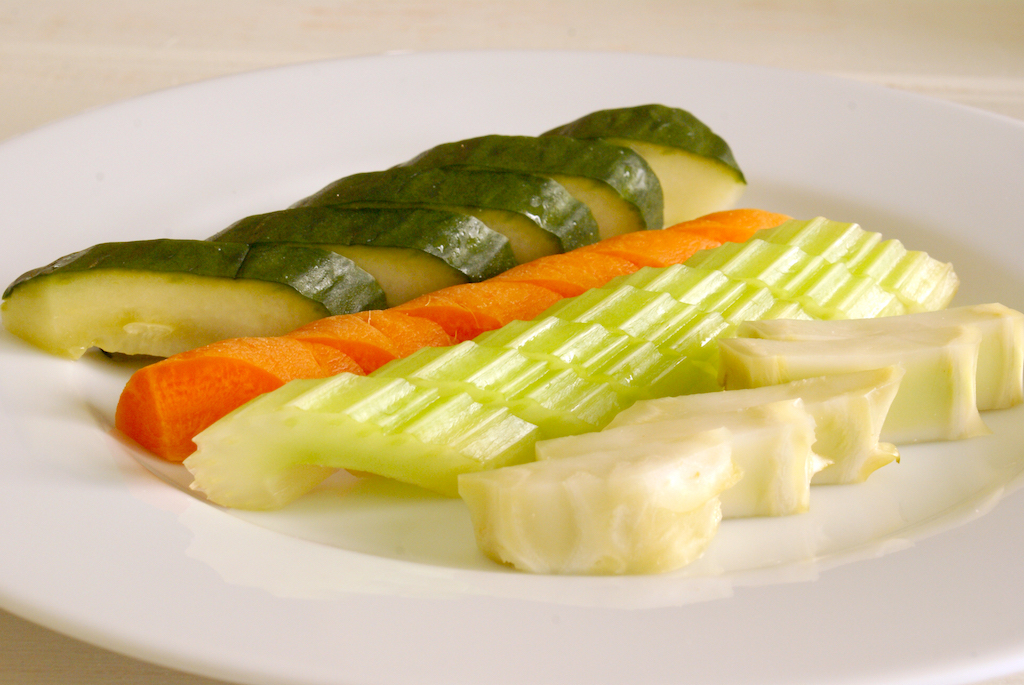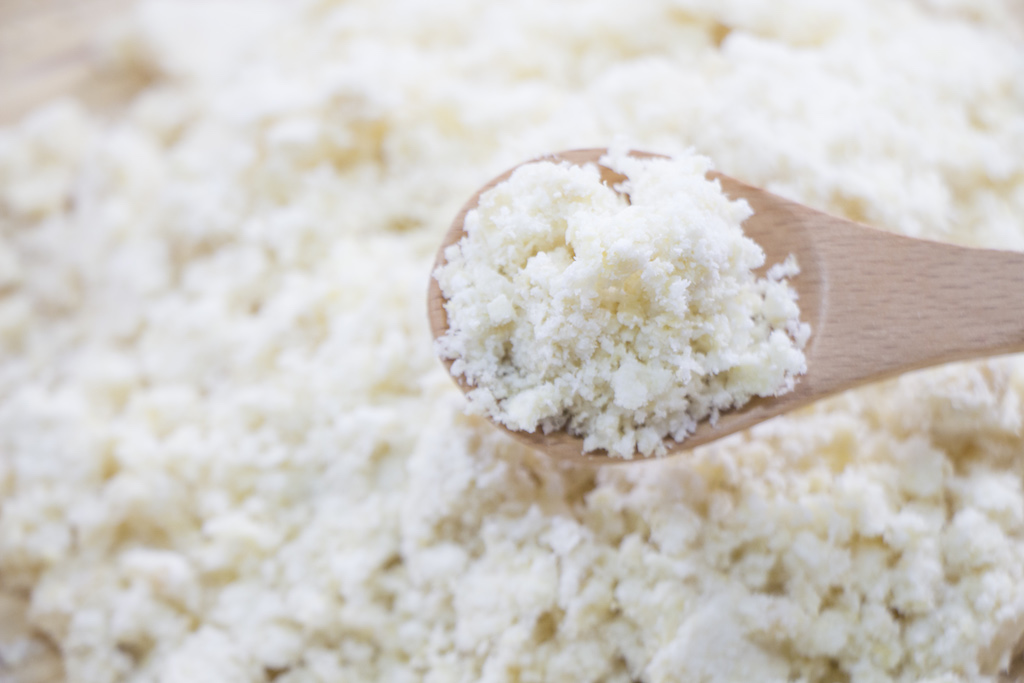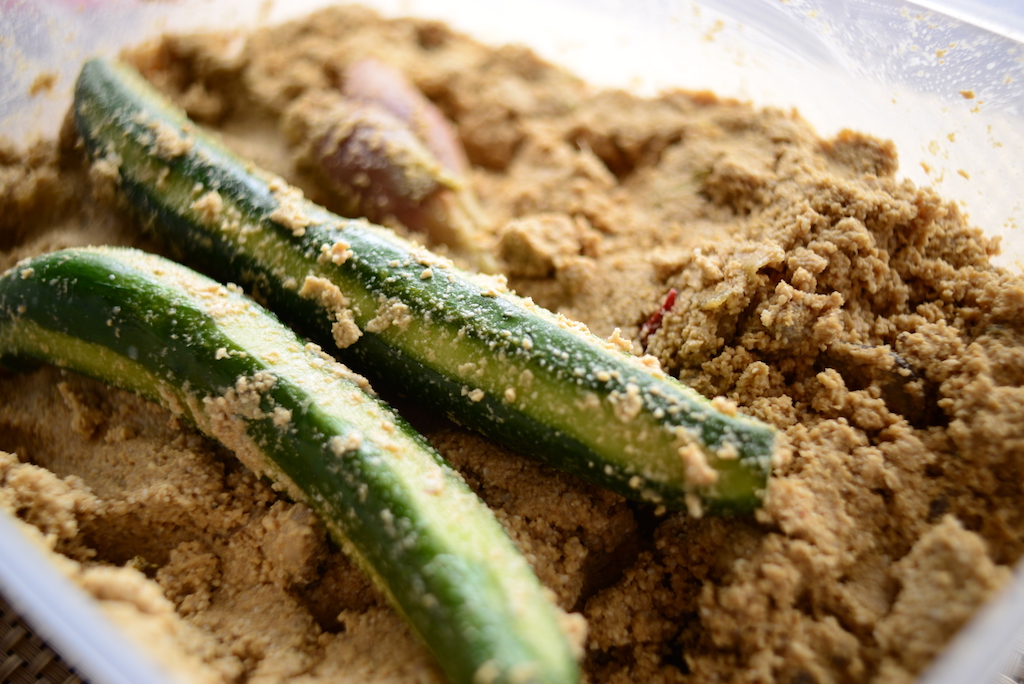What is Nukazuke (糠漬け)?
Nukazuke is Japanese pickles made in brine and fermented rice bran.
(Nuka is Japanese term for rice bran, and zuke is Japanese term for pickled.)
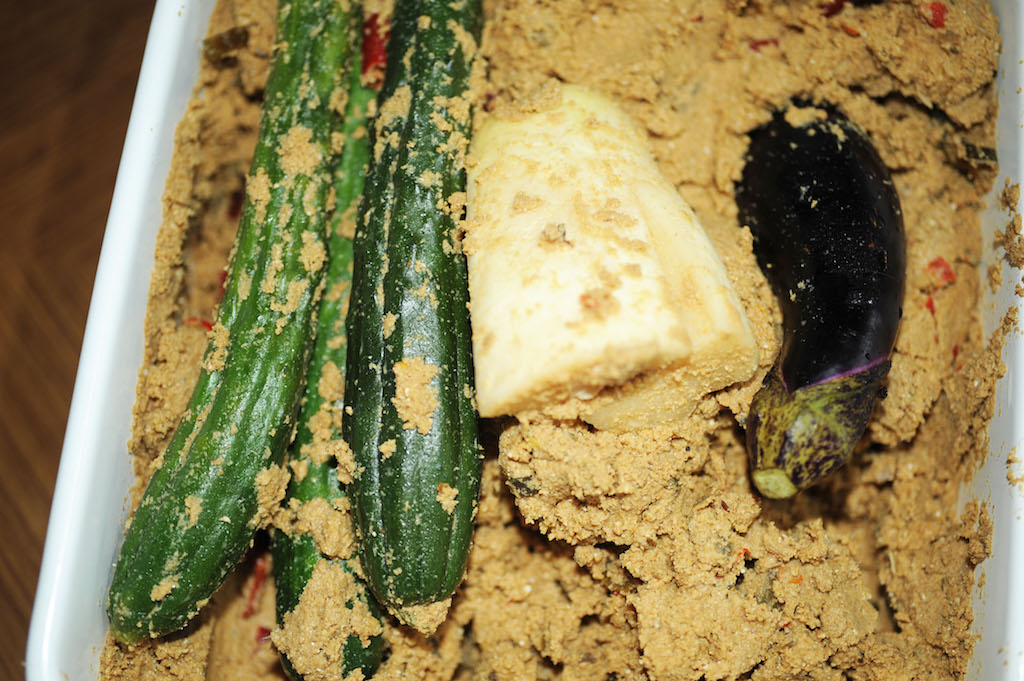
Nukazuke is made by pickling vegetables in rice bran bed made by fermenting lactic acid bacteria.
Typically using vegetables with a lot of water such as cucumber, eggplant, and daikon is popular when making nukazuke.
・Lightly pickled nukazuke is called “Asazuke” or “Ichiyazuke”
・Well-pickled nukazuke is called “Furuzuke”
What is Nukadoko (糠床)?
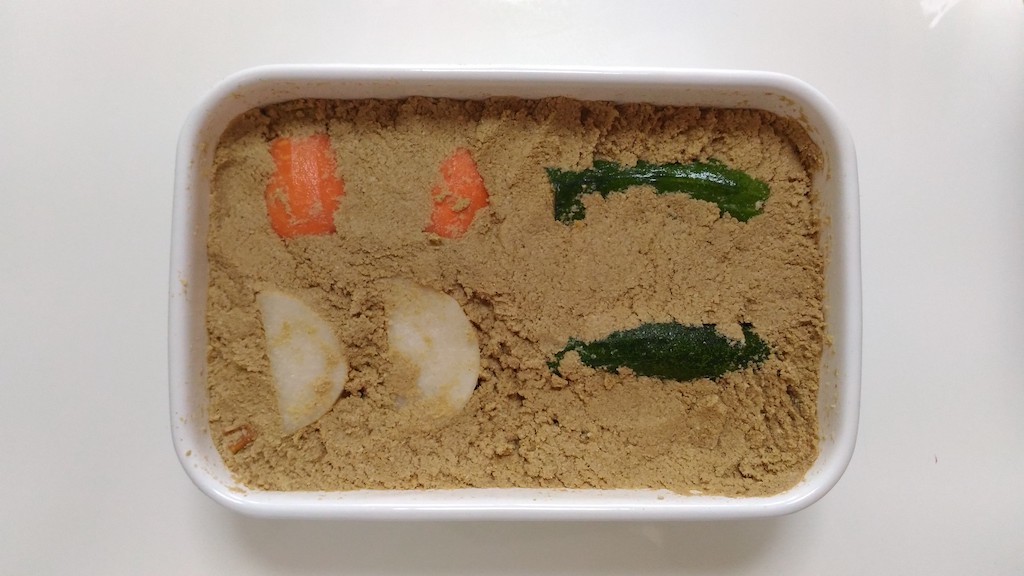
Nukadoko is fermented rice bran bed for making nukazuke. It’s also called “Nuka-miso”, and made by fermenting the mixture of rice bran and brine.
What Does Nukazuke Taste Like?
The taste of nukazuke is slightly sour and slightly salty. You can smell the unique flavor of the rice bran.
Rice bran has not so good smell as it is, but the flavor has improved when it’s fermented as nukadoko.
How Do You Eat Nukazuke?
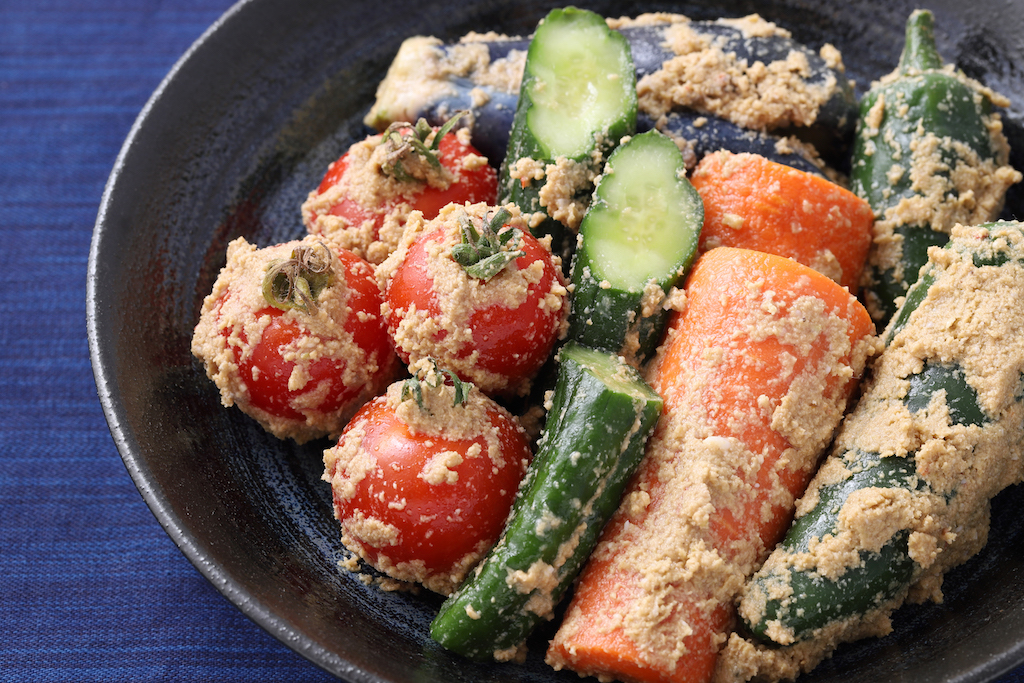
Nuka, rice bran is shells produced when brown rice is milled, and the texture of rice bran (nuka) is not really nice. You can eat nukazuke without removing this rice bran (nuka), but normally Japanese people wash them off before eating nukazuke.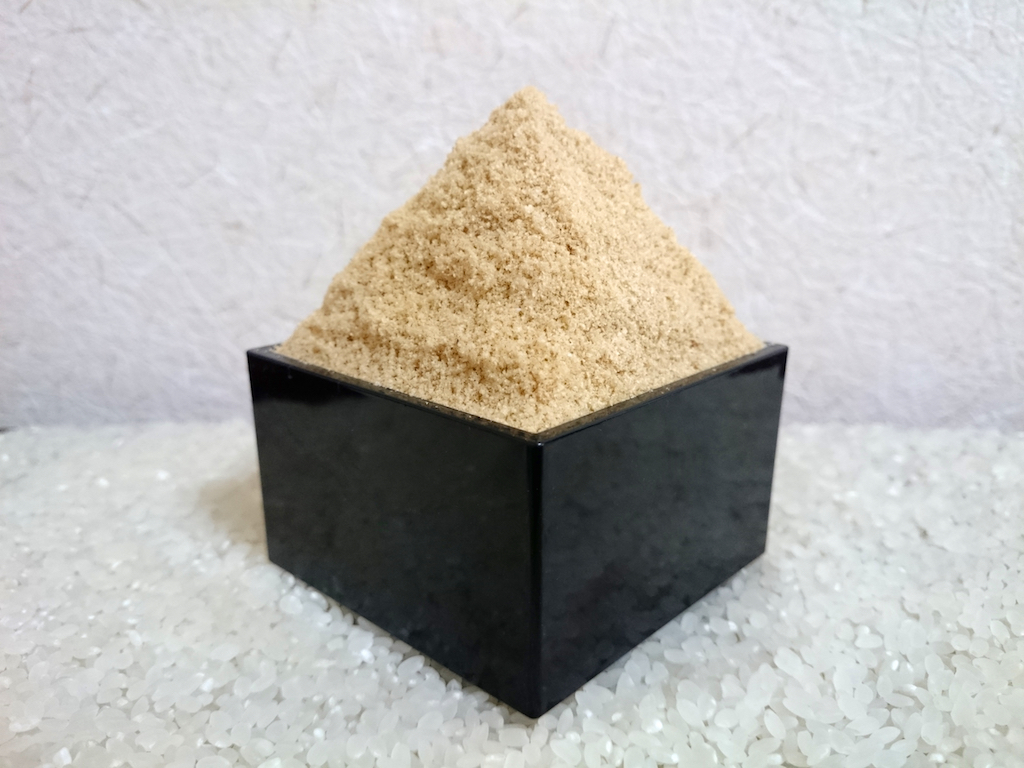 ▲Rice Bran (Nuka)
▲Rice Bran (Nuka)
Benefits of washing off rice bran (nuka) before eating:
・Both the texture and the taste of vegetables will be better.
・You can reduce sodium intake.
・You can prevent from losing rice bran bed.
Nourishment of fermented rice bran does not decrease just because it is washed away. You can still take it because the vegetables already absorbed rich nutrients from nukadoko.
Nutrition and Benefits of Nukazuke

Nukazuke which Japanese people have been familiar with for a long time contains abundant nutrients. The nutritional components contained in the rice bran bed is greatly soaked into vegetables while pickled.
One of them is vitamin B1. It is said that by pickling vegetables in fermented rice bran bed, vitamin B1 in vegetables increases about 10 times. The amount of vitamin B1 depends on the time of soaking though.
Taking vitamin B1 could help you to maintain healthy skin and mucous membranes.
Another one is lactic acid bacteria. It’s generic term for bacteria that metabolize sugars such as lactose and glucose, then make a lot of lactic acid. Lactic acid bacteria is contained in fermented foods including yogurt and pickles.
It could suppress the growth of bad bacteria in the intestines, and improve the intestinal environment. So it is said that lactic acid bacteria helps constipation, lower cholesterol, and improve immunity.
Nukazuke contains high levels of sodium, at the same time, it contains a lot of potassium. So it’s not going to be a problem if you don’t eat it too much. But be careful especially when you eat well-pickled nukazuke.
How Do You Make Nukazuke?
You can buy finished product of nukazuke in grocery stores or even convenience stores in Japan. But it’s always great to have fresh nukazuke made by your own.
Some people make their own nukadoko (rice bran bed) at home, while others buy it at stores nowadays. Actually you need patience to keep good nukadoko at home in either case.
For here, I will introduce the recipe of home-made nukazuke with some important tips for it, so please check it out carefully!
Home-Made Nukazuke Recipe
Ingredients (covering 2-3 servings nukazuke)
・2.2lb (1kg) Raw rice bran / roasted rice bran
・4.1cup (1liter) Water
・4.5oz (130g) Natural salt: About 13% of rice bran
・2-3 pieces of 2 inches square (5cm square) Kelp (kombu)
・2-3 Red peppers
・A handful of Dried bonito shavings*
・5 Dried small sardines*
・A little bit of Dried shiitake mushrooms*
・A little bit of Green Japanese peppercorn (real sansho)*
・Scraps of vegetables such as cabbage outer leaf, skin of carrot or daikon, and broccoli core, etc (They are used only for preparation of nukadoko, and planned on throwing them away. )
*Those with this mark are needed to create more umami (nice taste) in nukadoko. If you cannot get them all, it’s okay to omit some of them. It’s better to have at least kelp (kombu) and red peppers.
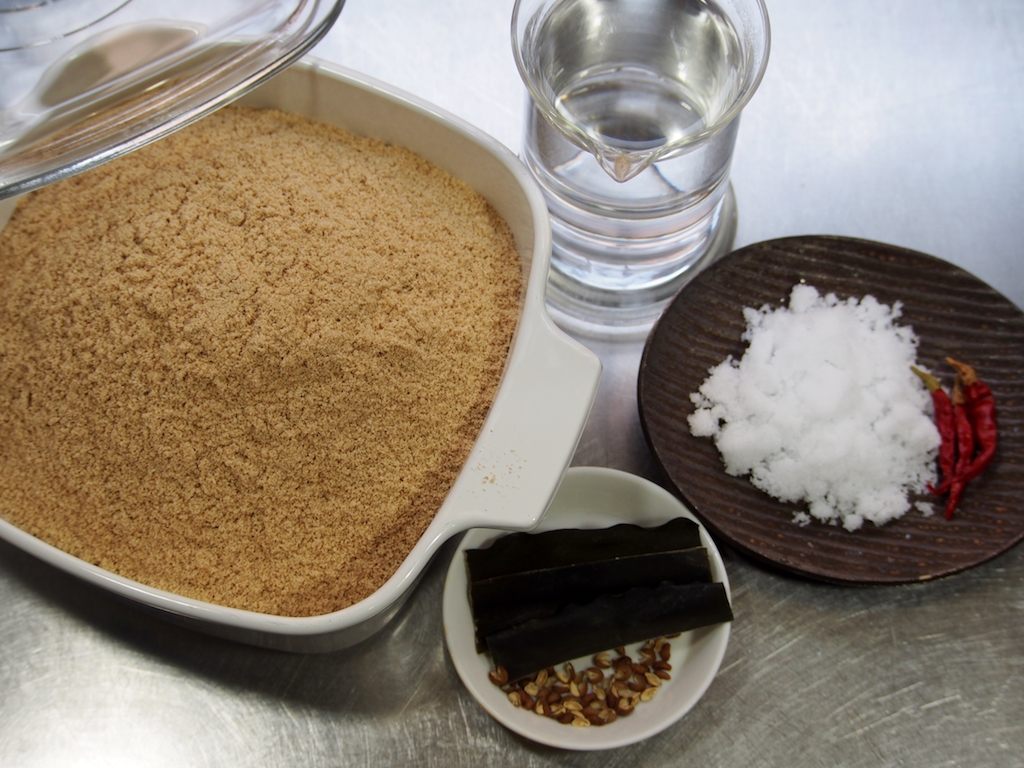
For the storage container for rice bran bed, please prepare the one that meet the following conditions:
・One with a lid
・A deeper shape than a flat one
・The material of the container can be anything
Directions
1. Mix rice bran with natural salt in a big bowl. Then, add water, and mix well. Combine them completely while holding in your hand. It’s important to soak the rice bran evenly with water.
To check the ideal amount of water, roll it into the size of a golf ball. And it’s perfect if the moisture slowly flows out between your fingers when you hold it firmly with your hand. (It’s okay to leave about 50-100ml of water.)
2. Move the mixture of 1 into the storage container, and add red peppers, dried bonito shavings, dried shiitake mushrooms, and green Japanese peppercorn (If you have one). Mix together.
3. Add scraps of vegetables (cabbage outer leaf, skin of carrot or daikon, and broccoli core). Those are not for eating but for making the rice bran bed tasty. Those vegetables can supplement nutrients for fermentation and moderate moisture.
Add kelp and dried small sardines too. Those are very hard, so you can stick those into the rice bran bed.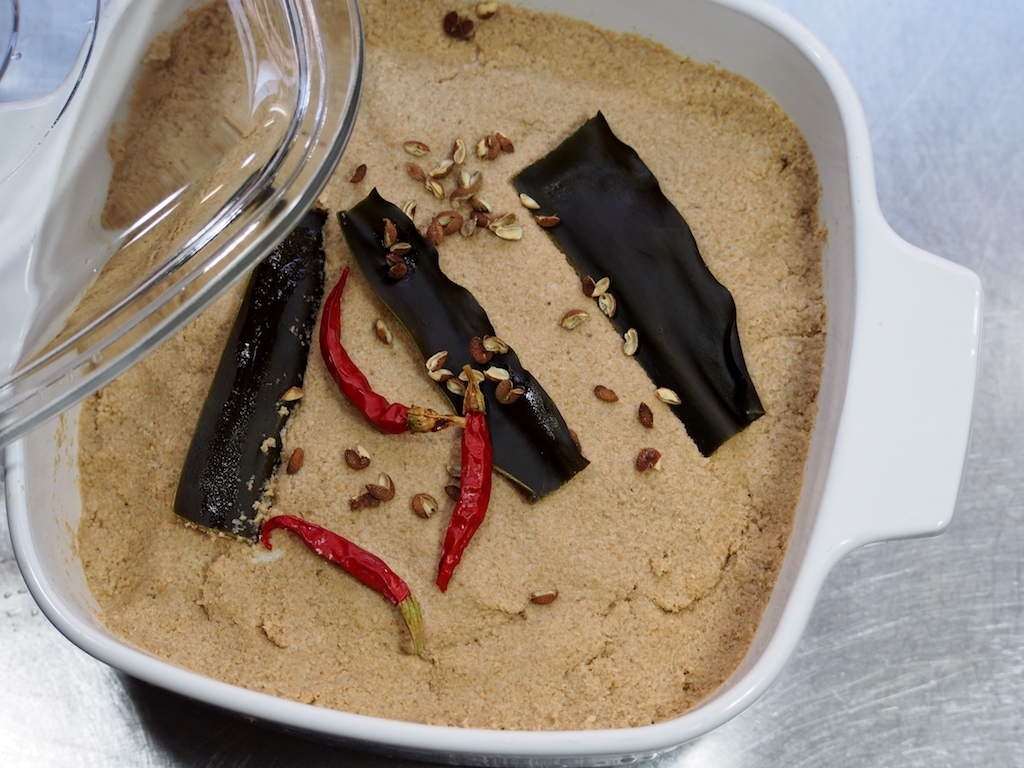
4. Wipe the sides of the storage container clean with a clean cloth. Put the lid on, then the rice bran bed is completed for the moment.
Before putting the lid on, make sure to remove the air by pressing the surface with the palm of your hand. Do this work well every time you mix the rice bran bed because lactic acid bacteria prefers a low-oxygen environment.
++++++++++++++++++++
Actually nukadoko (fermented rice bran bed) is not ready yet.
Before putting vegetables for eating, the rice bran bed has to be fermented well by pickling scraps of vegetables. It takes about 15 days.
Please exchange scraps of vegetables (cabbage outer leaf, skin of carrot or daikon, and broccoli core) for fresh one every 4-5 days. When replace them, remove the rice bran attached to them as much as possible, and squeeze the vegetable juice and add it back to the container.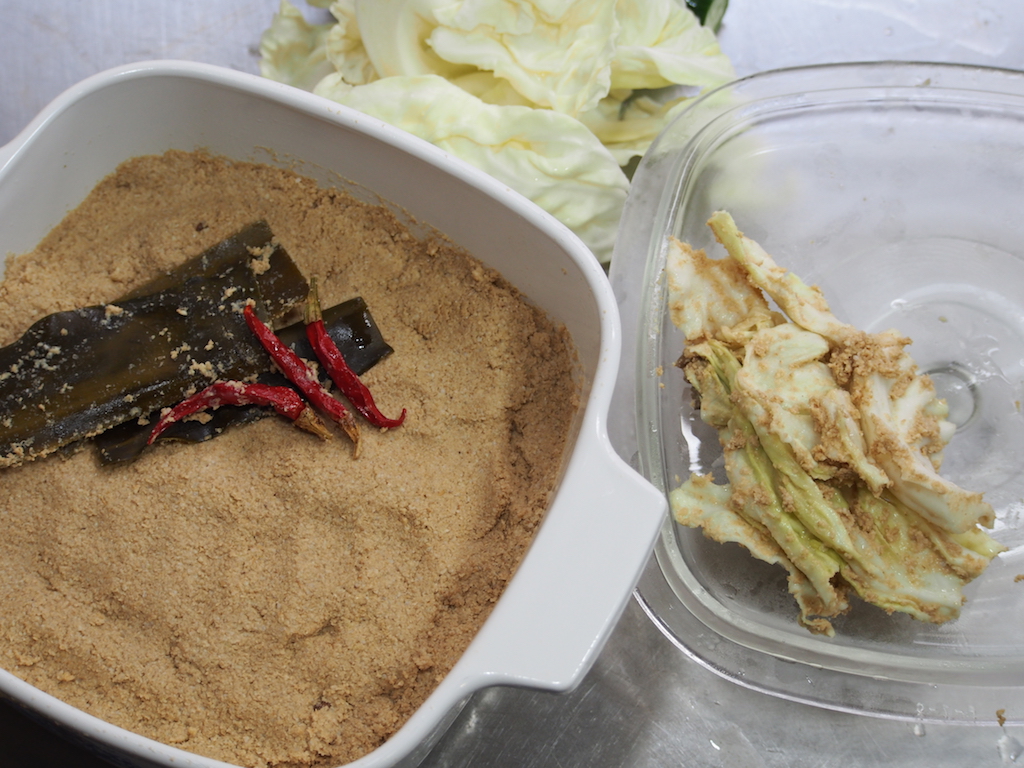
Repeat this process. And one more thing you need to do is that mixing the rice bran bed from the bottom of the container so well twice a day.
The number of times to mix it starts with “twice a day”, and you can reduce it to “once a day” after 10 days because like I mentioned earlier, lactic acid bacteria prefers a low-oxygen environment.
After 15 days, the rice bran bed is supposed to be mostly fermented in an environment where the room temperature is about 68 to 77° F (20 to 25° C).
++++++++++++++++++++
5. Finally you can put vegetables you will eat! Pickle your favorite vegetables (cucumber, carrot, daikon, eggplant, okra, etc). You can also make nukazuke with boiled eggs.
Vegetables should be washed well. Then, sprinkle a little salt on them and rubbing it in before pickling so that nukazuke will be ready sooner and finished color of vegetables will also improve.
If you want to pickle them quickly, cut them in half.
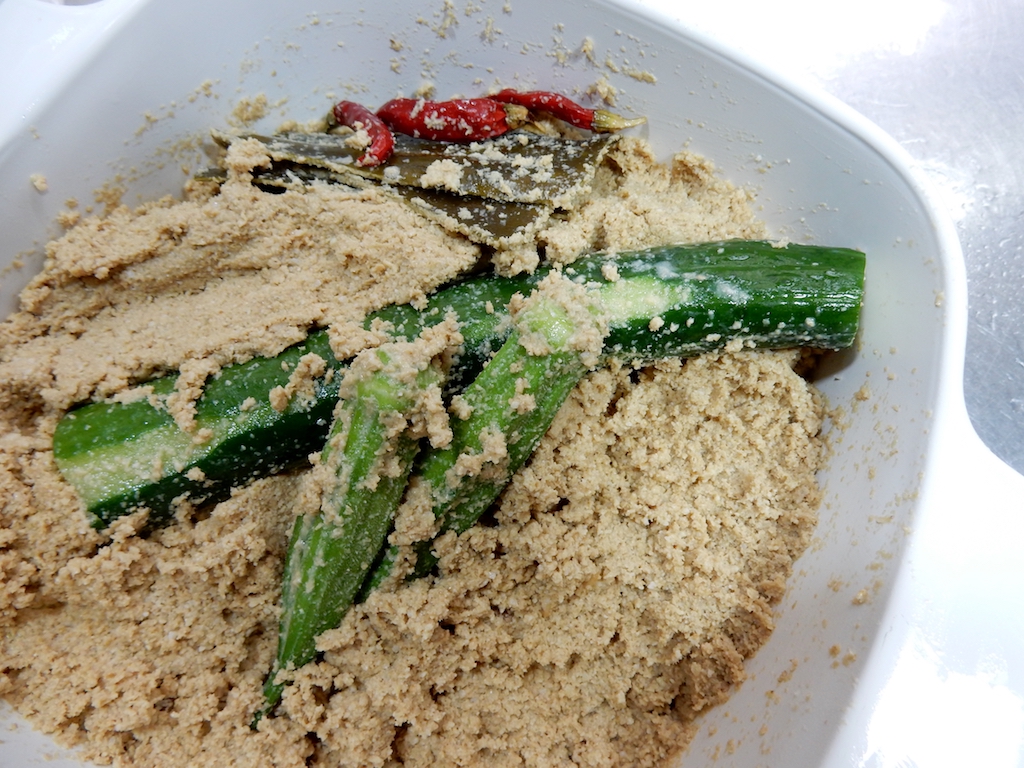
Soaking Period as A Guide
A whole cucumber
At room temperature: 3-5 hours
In refrigerator: Half a day to a day
Cucumber cut in half vertically
At room temperature: 1-3 hours
In refrigerator: 4 hours to half a day
Please adjust the period to your liking. As I mentioned above, it takes about 3-4 times longer than at room temperature if you store it in the refrigerator.
How to Maintain Good Nukazuke?
In oreder to maintain good nukazuke, it’s generally said that you should mix the rice bran bed once a day.
Other than that, there are some tips that you should know to keep the bed good.
Find the answers for the following questions here: 6 Tips To Maintain Good Nukazuke
And please spend your time and energy on your nukadoko!
1. What Are Foods You Should Avoid To Make Nukazuke?
2. Should You Put Nukadoko (Fermented Rice Bran Bed) in the Refrigerator?
3. What Is the White Stuff on My Nukadoko?
4. How Often Should You Mix Nukadoko? / Should You Mix It Every day?
5. What Should You Do with Nukadoko When You Stay Away from Home?
6. Can You Freeze Nukadoko?

